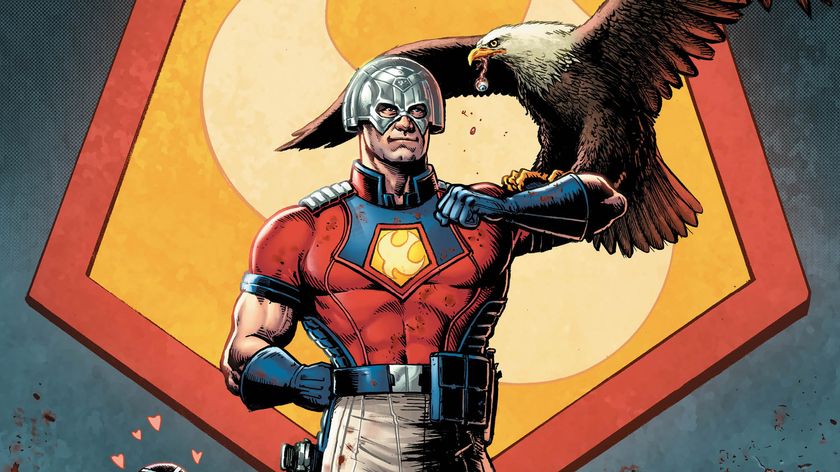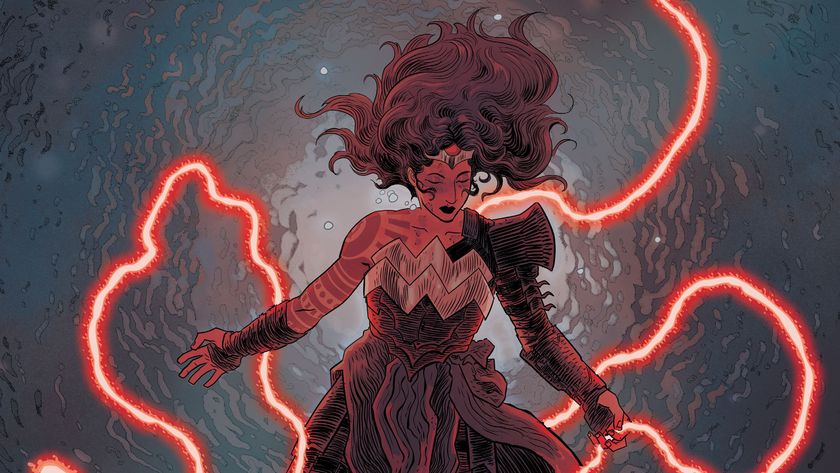The best Suicide Squad comic book stories of all time
Dead or alive, these are the best Suicide Squad comics anyone (even Task Force X) can find
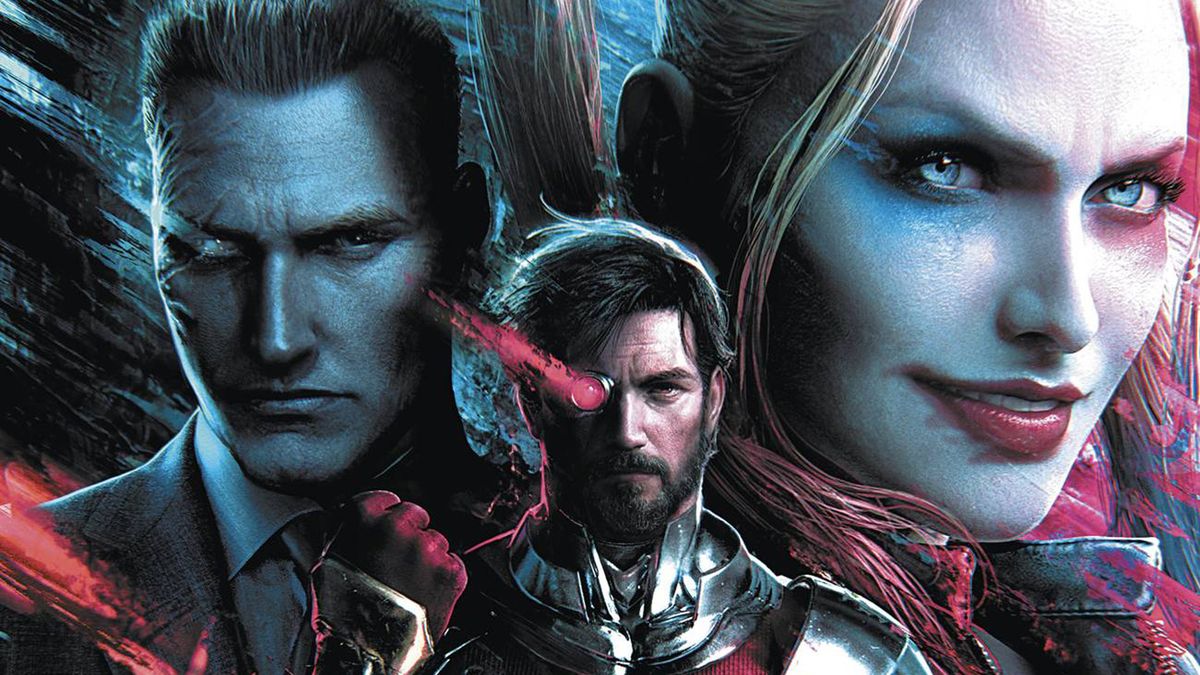
The latest DC movie The Suicide Squad is finally in theaters and streaming on HBO Max in the US, which means it's the perfect time to read - or re-read - the best Suicide Squad comic books.
The Suicide Squad was created in the '50s, but the high-octane action cut with morbid, slapstick humor version you might be familiar with is more a product of the '80s thanks to a dramatic revamp (and the introduction of Amanda Waller) by John Ostrander, Len Wein, and John Byrne in the DC event Legends.
In the Suicide Squad title that followed Legends, Ostrander (along with the brilliant Kim Yale and various artists) concocted the concept we know today: an oddball collection of costumed criminals who can chop time off their prison sentences by doing secret missions for the government, with the knowledge that they'll be fully disavowed by their employers should things go wrong.
Due to a high body count and tweaks to the core concept, there have been numerous incarnations of the team over the years, which begs the question - what are the best versions of the Suicide Squad?
We've nailed down our definitive list of the best Suicide Squad stories to read before or after watching James Gunn's The Suicide Squad film - and we didn't need the threat of our head exploding to do it.
10. Suicide Squad: Death is for Suckers
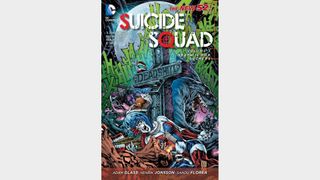
2012-2013's 'Death is for Suckers' is a tale of two stories - a Harley Quinn/Joker story that takes place during the funeral of Deadshot, and the team dealing with the surprise resurrection of dead teammates Yo-Yo, and well ... Deadshot.
In the former, the return of Harley's former beau gave writer Adam Glass the chance to show off the growth she went through after her break-up into a more independent, self-realized character who quickly became a core piece of the Suicide Squad puzzle under his watch.
Comic deals, prizes and latest news
Get the best comic news, insights, opinions, analysis and more!
The latter story's focus on the resurrected Yo-Yo and how his return from the dead changed him exemplifies the kind of unique character growth that Suicide Squad specializes in.
As the third arc of Glass' 'New 52' era Suicide Squad relaunch, 'Death is for Suckers' really plays to the title's unique narrative framework with the only negatives being maybe a little too much of the often ubiquitous Joker, and the quick-turnaround resurrections of key characters which compromised the core premise that villains could be killed if they don't follow the rules, and in effect lowered the stakes.
Buy: Amazon
9. Suicide Squad: Discipline And Punish
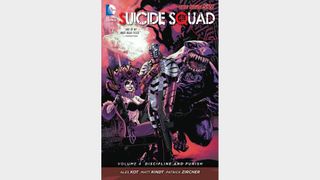
2013's 'Discipline and Punish' is an intense character-driven arc focused inward on the members of Suicide Squad, with the long-time DC military character Unknown Soldier's installation as its new leader serving as a catalyst for this round of self-examination.
A hard man with a knack for making hard decisions, the Unknown Soldier's crisp military protocols chafes against the ramshackle nature of the team's recruits - making for the lifeblood of a great story - inner conflict.
The set-up also gives readers a way into learning about the often sinister methods Amanda Waller employs to get the job done - from using death row inmates to fly drone strike missions to harvesting Resurrection Man's metahuman abilities (as his name implies he gets better when he dies) to raise fallen Squad-mates back from the dead. And that's not even mentioning the shocking hiring of the psychotic James Gordon Jr. (yes, that James Gordon's son) as a profiler/adjutant for the team.
Writer Ales Kot and artist Patrick Zircher's short but powerful run on Suicide Squad seized on some of the most volatile elements of the concept to expert effect.
Buy: Amazon
8. Suicide Squad: The Final Mission
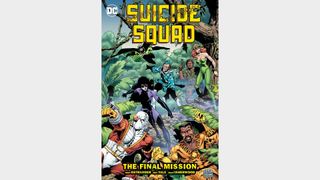
Desperate times call for desperate measures, and in 1992's 'The Final Mission' Amanda Waller herself leads a hastily-recruited version of Task Force X to take down a vicious metahuman revolutionary who had taken over the government of the fictional Caribbean nation of Diabloverde.
While best known for her ruthlessness and calculating demeanor, 'The Final Mission' reveals a kinder, more principled side of Waller that shows actual concern for people and a desire to right wrongs committed in her name.
Full of character development and reflection on the core elements of Suicide Squad established over the years, 'The Final Mission' works well and as it turns out as a fitting finale for co-creator John Ostrander and co-writer Kim Yale.
Buy: Amazon
7. Suicide Squad: The Three Waves of Doom
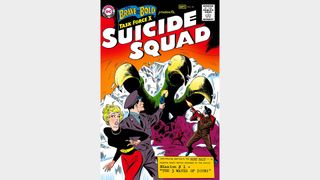
While the Suicide Squad as we know it now bears little resemblance to the original version of the team, its first storyline serves as a useful contrast to what the concept would later come.
1959's Brave & The Bold #25 does not have convicts pressed into military service or a gung-ho Amanda Waller (a Black woman in charge? In 1959? Preposterous!), but there is long-time field leader (and movie cast member) Rick Flag piloting a "flying laboratory" and leading a team of scientific specialists against '50s Cold War-era sci-fi threats of the time.
In this initial outing, the name 'Suicide' comes from the dangerous missions they take on (like the mysterious 'Red Wave,' a meteor storm whose radiation causes the team to shrink and a deadly snake to grow giant ... hey, it was the '50s) and not the threat of execution from their handlers that defines subsequent versions.
While not the team people would come to know and love, the original Suicide Squad sets up the straight-laced military background of Rick Flag and shows a proto version of the team before Waller revamped it in her own image.
Buy: Amazon
6. Suicide Squad: The Phoenix Gambit
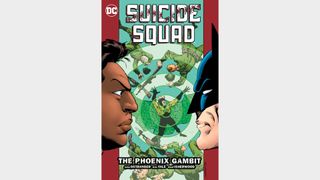
Suicide Squad swings into the '90s with a new status quo and a new boss: anyone that will pay them.
1990's 'The Phoenix Gambit' begins by skipping ahead one year (a plot device DC has revisited numerous times since) after Amanda Waller was sentenced to prison. When we catch up with Waller and the Squad 365 days hence readers learn she has re-engineered Task Force X from being a government black ops team to a freelance mercenary squad available to the highest bidder.
If you're thinking the A-Team but with a body count - ding!
And their first employer is none other than Batman.
Hey, he's a billionaire.
Batman and Waller make an odd but entrancing team, together recruiting a fresh team - mostly including some old favorites, but with some new blood in the mix. Their mission is to infiltrate the fictional country of Vlatava, which as you can guess by the Vs, l and t is an Eastern European nation at the center of the US and USSR's long-running Cold War struggles.
'The Phoenix Gambit' is the second time John Ostrander and Kim Yale revamped Waller's squad, a rare instance of a team being 'rebooted' not for the sake of a new marketing era or by a new creative team, but simply as a narrative choice by established creators - a rarity in today's superhero comics market.
Like a new season of a long-running acclaimed TV drama, Suicide Squad: The Phoenix Gambit works well to show how malleable the team can be and how the characters grow and react after their experiences.
Buy: Amazon
5. Legends
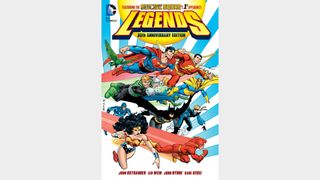
After 1985's Crisis on Infinite Earths rebooted all of DC continuity, the ensuing Legends limited series aimed to re-establish classic (and not-so-classic) DC characters and concepts. Although the series crisscrosses the DCU, in addition to major revamps to characters like Superman, Batman, and Wonder Woman in now-famous reboots, there was a relatively unassuming update to a forgotten '50s team, the Suicide Squad.
The concept of Task Force X had lain dormant for decades, but in Legends the team was revived with newly-created leadership (Amanda Waller) and revised membership criteria (no longer the best military and science academia could offer, but instead a Dirty Dozen crew of metahuman criminal convicts)
Though in retrospect the introduction of a team of ruthless anti-heroes seems an odd fit for Legends, a story in which villain Glorious Godfrey led an attack on the very concept of superheroes, this minor b-plot to the larger event touched a nerve and set off what would become a comic shop hit a year later in its own series.
Legends was a platform for the newly rethought Suicide Squad to make an impact with readers and given the new spin on the concept survives on the page and on the screen to this day, it seems to have done the job.
Buy: Amazon
4. Suicide Squad: Kicked In The Teeth
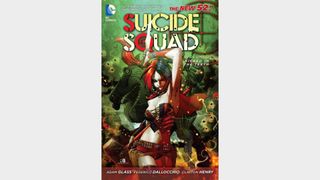
The Suicide Squad concept got a shot in the arm with the controversial 'New 52' reboot, as writer Adam Glass injected new energy, new ideas, and one new recruit - Harley Quinn - who quickly became a signature member of the team. Beginning with 2011's 'Kicked in the Teeth,' the first 'New 52' story arc also featured the debut of a revamped Amanda Waller in both appearance and backstory.
It's here the concept of Suicide Squad recruits getting explosives implanted in their necks to ensure compliance was introduced. This innovation cranked up the intensity and the urgency of every mission and demonstrated Waller's utter ruthlessness - a character trait carried over in Waller's two films appearances.
The level of spectacle readers could expect in a Suicide Squad story was also ratcheted up. In one story the team murders an entire stadium full of people and - if that wasn't enough - pin the blame on a fellow team member.
This arc establishes a new core of the team - Waller, Deadshot, and Harley Quinn - that most comic book and screenwriters followed until, well, Will Smith didn't come back for the movie sequel.
Buy: Amazon
3. Suicide Squad: The Janus Directive
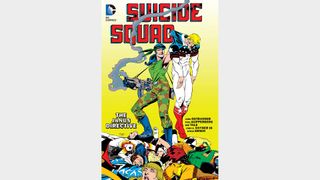
Another layer to the entrancingly complicated character of Amanda Waller is revealed in 1989's crossover storyline 'The Janus Directive,' as she goes 'off book' and begins tasking her team with missions from her own private agenda.
Or does she?
After an attempted assassination and replacement with a compliant doppelganger, Waller goes undercover as her own body double to try to uncover the mysterious organization that tried to have her replaced. The subterfuge plays out on multiple levels as Waller has to act like herself and her own worst enemy, putting her team through the meat grinder in the process.
The story also brings in several fun new recruits to the team including Peacemaker (in his first stint), the raging nationalist Force of July (prescient for the current cultural divide), and even Manhunter (decades before he would turn into a spymaster himself in the recent Event Leviathan comics event).
'The Janus Directive' shows the depths Waller will go to dismantle a threat, and the repercussions it can have for herself and the team. Although she won the battle, the story ends with President Bush (yes, the real President Bush) disbanding the team and putting Waller in jail (remember 'The Phoenix Gambit,' #6 on our list?)
Lotta nerve, that guy …
Buy: Amazon
2. Suicide Squad: Bad Blood
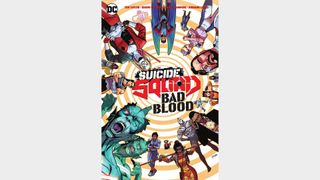
A close second in this list of best Suicide Squad comics, the recent 'Bad Blood' storyline by Tom Taylor and Bruno Redondo doubles down on what makes Task Force X great - character work, high stakes, and lots of double-crosses.
With shades of Ostrander's own multiple rebrandings of the team, 'Bad Blood' opens with a bloody corporate takeover of Task Force X and the addition of new recruits who call themselves the Revolutionaries - their bond is they were all were victims in one way or another of previous Suicide Squad missions.
Creators Taylor and Redondo double as expert con men performing a 'Kansas City Shuffle,' leading readers on an engrossing bit of misdirection, subterfuge, and old-fashioned chicanery that eventually leads to the real story. Like playing against a sidewalk card hustler, you need to keep your eye on Deadshot throughout the story.
With killer one-liners, a story that keeps you on your toes, and breakout new characters such as lovers Wink and the Aerie, 'Bad Blood' is the best modern-day Suicide Squad story you'll find.
Buy: Amazon
1. Suicide Squad: Legerdemain
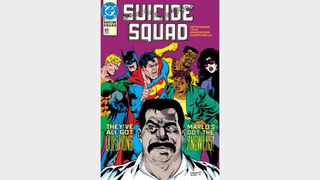
When Justice League heavy-hitters Superman, Batman, and Aquaman show up on Task Force X's door, everyone pays attention. In 'Legedermain,' that DC superhero trio thinks Waller and her team are responsible for the death of their teammate, the Atom, and it's up to the team to keep the super friends at bay while they try to find out what really happened.
As the penultimate story in the defining Ostrander/Yale era of the Suicide Squad, 'Legerdemain' reminds us of everything great about their run as a whole - messy body counts, high personal stakes, and the clever juxtaposition of this black ops team with the shiny superhero side of the DCU.
The story accomplishes in three issues what would probably make for a double-digit issue 'event 'today and brings together the disparate elements of the story with great deftness and an overwhelming air of quality.
This was the best of what the Suicide Squad can be, from the creative team that conceived the enduring concept and set the storytelling standard.
Buy: Amazon
Most Popular



